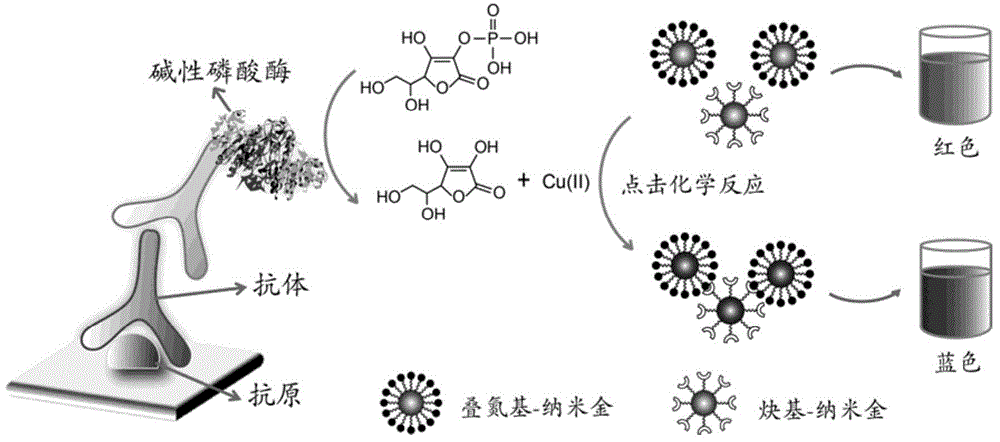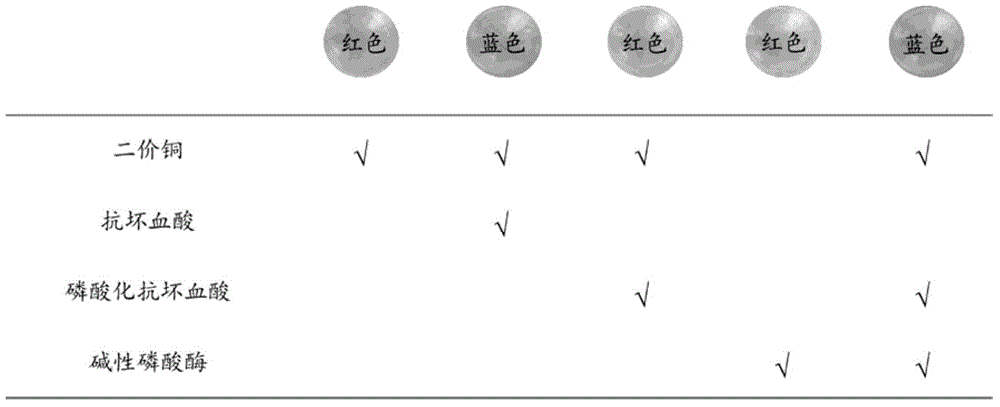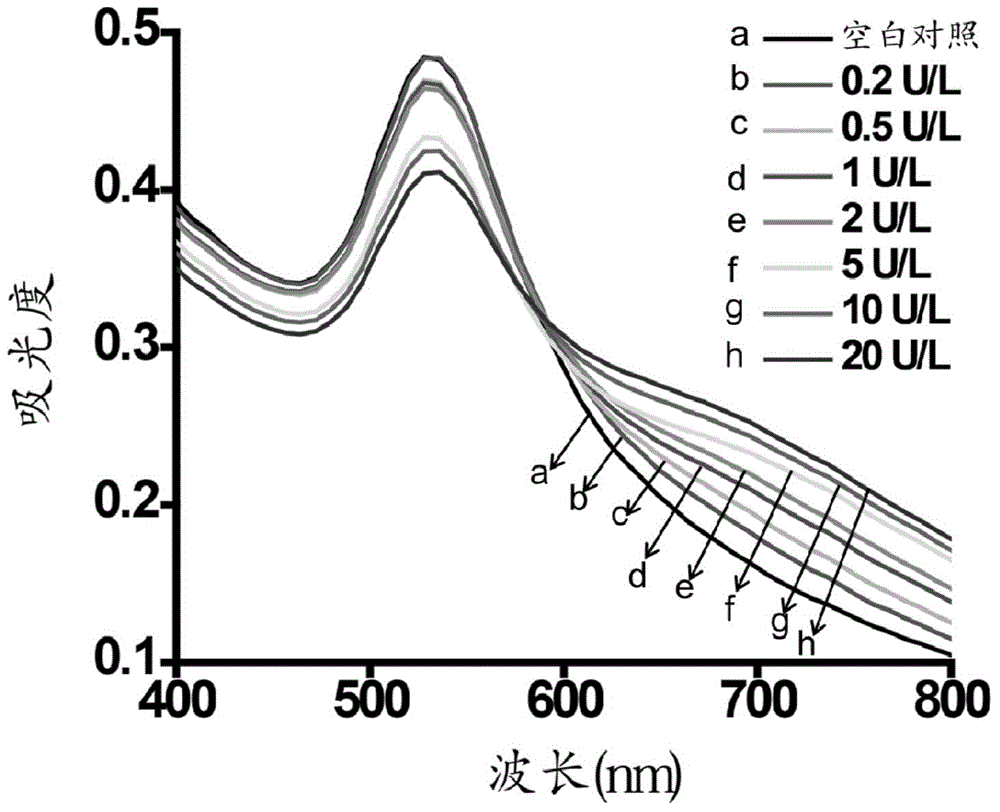Method for visually detecting antigen-antibody reaction and application of method
An antibody reaction and antigen technology, which is applied in the direction of chemical reaction of materials for analysis, measurement devices, biological tests, etc., can solve the problems of limited development and application of instruments, and achieve the effects of low cost, good stability and high sensitivity
- Summary
- Abstract
- Description
- Claims
- Application Information
AI Technical Summary
Problems solved by technology
Method used
Image
Examples
Embodiment 1
[0047]Synthesis of Surface Alkyne Functionalized Gold Nanoparticles
[0048] Utilize chloroauric acid reduction method to prepare nano-gold, the obtained nano-gold is centrifuged under a high-speed centrifuge, then collects the precipitate, and the precipitate is dispersed in a mixed solvent of water and tert-butanol (water: tert-butanol=2:1 ). Disperse 4mL of the above nano-gold solution in a mixed solvent of 16mL of water and tert-butanol (water: tert-butanol=2:1), and then add 50 μL of sodium hydroxide (0.5M) to adjust the pH to 9. Add 100 μL of terminal alkyne-functionalized thiol ligand (10 mM) and 30 μL of terminal thiol-terminated polyethylene glycol (200 mM) under stirring, and obtain surface alkyne-functionalized gold nanoparticles after ligand exchange for 24 hours. particle.
Embodiment 2
[0050] Synthesis of surface azide-functionalized gold nanoparticles
[0051] Utilize chloroauric acid reduction method to prepare nano-gold, the obtained nano-gold is centrifuged under a high-speed centrifuge, then collects the precipitate, and the precipitate is dispersed in a mixed solvent of water and tert-butanol (water: tert-butanol=2:1 ). Disperse 4mL of the above nano-gold solution in a mixed solvent of 16mL of water and tert-butanol (water: tert-butanol=2:1), and then add 50 μL of sodium hydroxide (0.5M) to adjust the pH to 9. 100 μL of terminal azido-functionalized thiol ligand (10 mM) and 30 μL of terminal thiol-terminated polyethylene glycol (200 mM) were added under stirring, and the surface azido-functionalized ligand was obtained after 24 hours of ligand exchange. Gold Nanoparticles.
Embodiment 3
[0053] Effects of Different Substances in the Reaction System on the Click Chemistry Reaction
[0054] The surface alkyne-functionalized gold nanoparticles and the surface azido-functionalized gold nanoparticles were mixed in a ratio of 1:1 for later use. Add divalent copper ions, divalent copper ions and ascorbic acid, divalent copper and phosphorylated ascorbic acid, alkaline phosphatase, divalent copper and phosphorylated ascorbic acid and alkaline phosphatase to the mixture of gold nanoparticles, and react for a period Observe and record the change of solution color after time, the results are shown in figure 2 .
[0055] from figure 2 It can be seen that when divalent copper ions, divalent copper ions, phosphorylated ascorbic acid, and alkaline phosphatase are added respectively, the solution is red; , the solution turned blue. This result indicates that alkaline phosphatase can catalyze the hydrolysis of phosphorylated ascorbic acid, dephosphorylate it to produce r...
PUM
 Login to View More
Login to View More Abstract
Description
Claims
Application Information
 Login to View More
Login to View More - R&D
- Intellectual Property
- Life Sciences
- Materials
- Tech Scout
- Unparalleled Data Quality
- Higher Quality Content
- 60% Fewer Hallucinations
Browse by: Latest US Patents, China's latest patents, Technical Efficacy Thesaurus, Application Domain, Technology Topic, Popular Technical Reports.
© 2025 PatSnap. All rights reserved.Legal|Privacy policy|Modern Slavery Act Transparency Statement|Sitemap|About US| Contact US: help@patsnap.com



